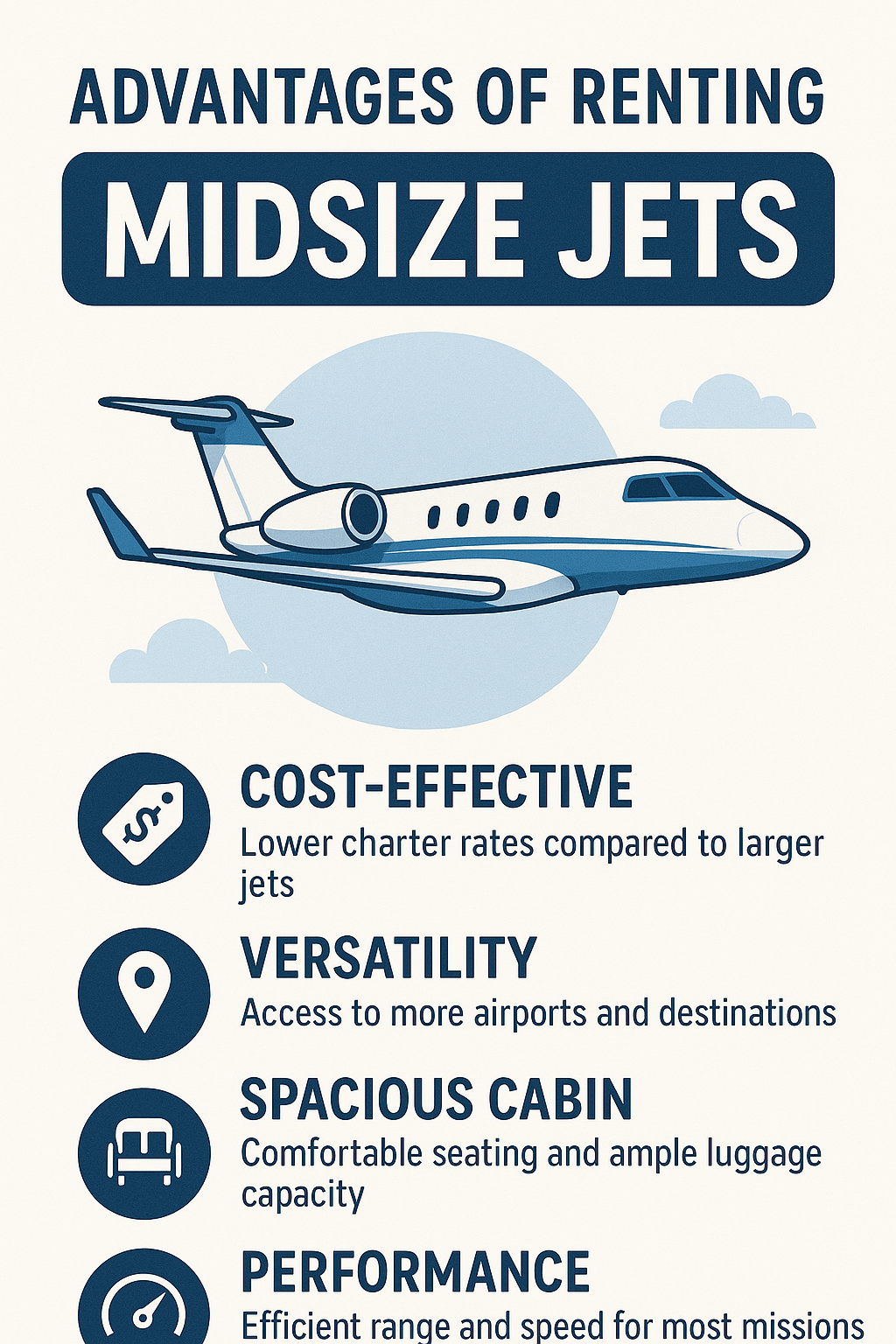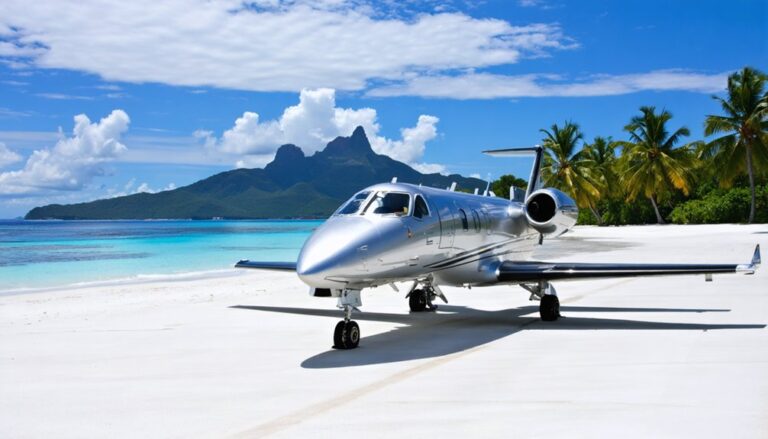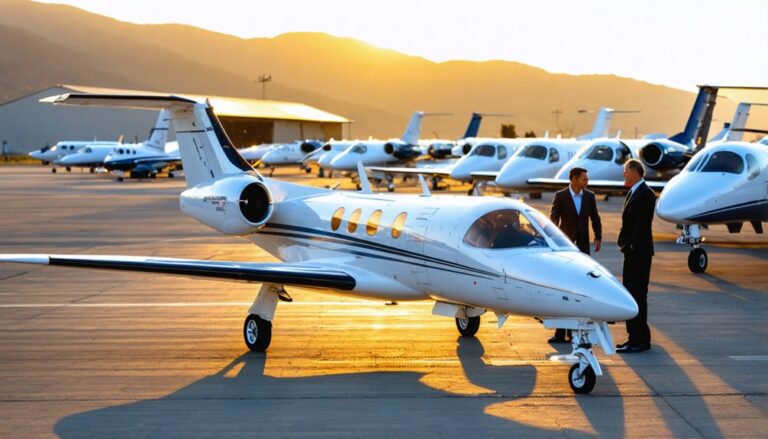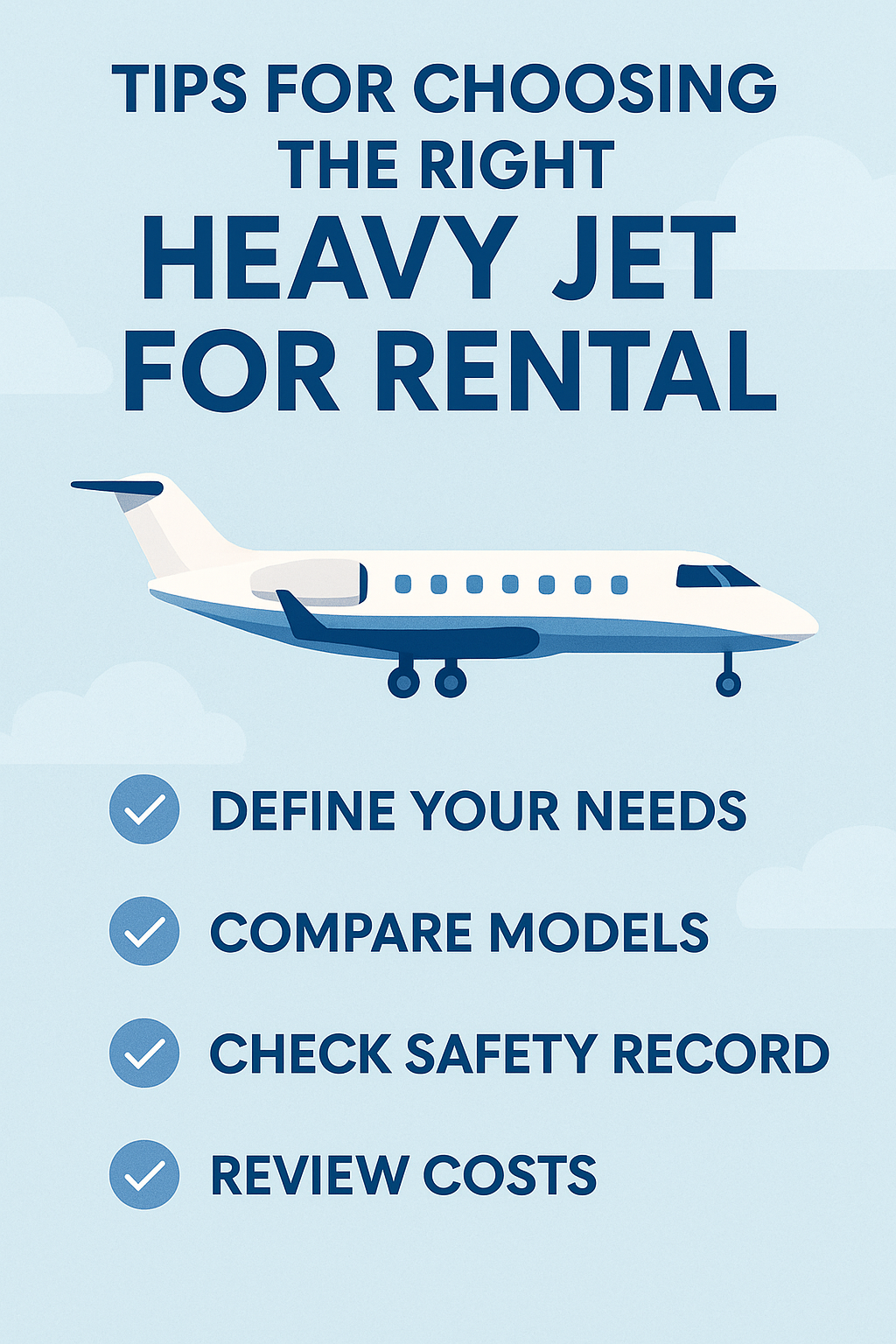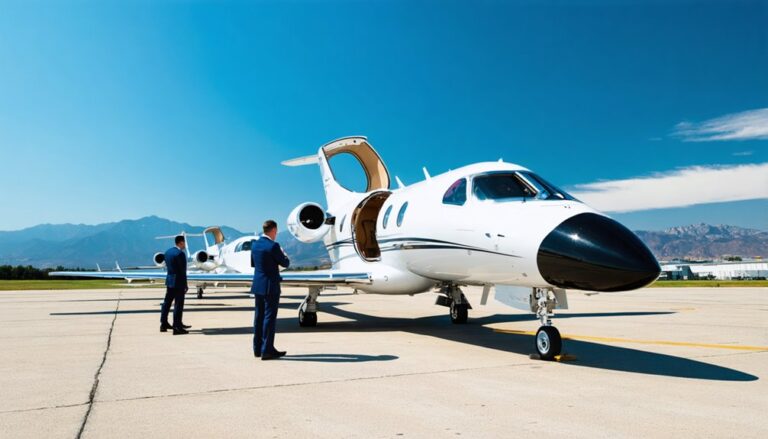Understanding the Range and Capacity of Light Jet Rentals
Light jets are an excellent choice for private travel, offering impressive ranges from 1,500 to 3,000 miles. They can accommodate between 4 to 8 passengers and cruise at speeds of 450 to 500 mph. Notable models include the Cessna Citation Bravo and the Embraer Phenom 300. These jets can land at smaller airports with runways as short as 3,000 feet, providing more options for your travel plans.
When planning a trip, remember that your passenger count, baggage weight, and weather conditions will affect the actual distance you can fly. These factors are crucial for ensuring a smooth journey. The cost of renting a light jet typically ranges from $9,000 to $10,000 per hour, making them a practical choice for regional travel.
Light jets strike a balance between accessibility and efficiency. They are designed for shorter trips, making them perfect for business travel or weekend getaways. Understanding these specifications will help you make the best decision for your flying needs.
Key Takeaways
Light jets are a popular choice for private air travel. They usually fly distances between 1,500 and 3,000 miles. Some models, like the Gulfstream G100, can even exceed 3,100 miles. This makes them a versatile option for many travelers.
These jets typically seat between 4 to 8 passengers. They can fly at speeds of 450 to 500 mph, making them quick for short trips. One big advantage of light jets is their ability to land at many regional airports. They can use runways as short as 3,000 feet, which opens up more destinations.
When it comes to costs, renting a light jet usually falls between $9,000 and $10,000 per hour. This makes them a smart choice for journeys under 1,500 miles. However, keep in mind that the number of passengers and the weight of luggage can affect how far the jet can fly and how much fuel it uses.
In summary, light jets offer a mix of range, speed, and accessibility. They fit well for small groups looking for efficient and comfortable travel.
The Fundamentals of Light Jet Aircraft
Light jets are remarkable aircraft designed for regional travel. They can carry 4 to 8 passengers and have impressive ranges between 1,500 and 3,000 miles. These aircraft provide amazing access to smaller airports with short runways, making it possible to reach places larger jets cannot.
Light jets offer unparalleled regional travel flexibility with impressive range, connecting you to destinations larger aircraft simply can’t reach.
Cruising speeds for light jets fall between 450 and 500 mph. This speed allows you to arrive at your destination quickly, avoiding the long waits associated with commercial flights.
Popular models like the Cessna Citation Bravo and Embraer Phenom 300 blend performance with advanced avionics and passenger comfort, ensuring a pleasant journey.
For those who prioritize time and freedom, light jets are a smart choice. The cost ranges from $9,000 to $10,000 per hour, which many find worth it for the independence and flexibility they offer.
Typical Range Capabilities of Popular Light Jets
Light jets are a popular choice for private air travel, thanks to their impressive range capabilities. These jets typically fly between 1,500 to 3,000 miles before needing to refuel. The fuel capacity of each jet plays a crucial role in determining how far it can go.
For instance, the Gulfstream G100 is known for its remarkable range of over 3,100 miles. On the other hand, the Citation Bravo can travel about 2,000 miles.
This extended range allows travelers to access more remote airports and unique destinations. You can fly directly to smaller airfields that larger commercial jets can’t reach.
Light jets open up a world of possibilities for personalized travel, making them highly desirable for business and leisure trips alike.
Range Distance Comparison
How far can a light jet actually take you before it needs to refuel? When I look at the range of popular light jets, I see their impressive capabilities for regional travel. Light jets usually have ranges between 1,500 and 3,000 miles. This makes them ideal for business travelers who seek freedom and flexibility.
Here’s a quick comparison of some well-known light jets:
| Aircraft Model | Passenger Capacity | Range (miles) |
|---|---|---|
| Cessna Citation Bravo | 7 | 2,000 |
| Embraer Phenom 300 | 7 | 2,000 |
| Gulfstream G100 | 7 | 3,100 |
These aircraft are not only fuel-efficient but also provide access to smaller airports that commercial flights often overlook. This unique feature means you can fly directly to your destination without the hassle of major hubs or unnecessary layovers. You gain both time and convenience, making light jets a smart choice for modern travelers.
Fuel Capacity Impact
Light jets are a fascinating category of private aircraft. Their performance hinges significantly on fuel capacity, which plays a crucial role in determining how far you can fly.
Take the Embraer Phenom 300, for instance. This jet can soar up to 2,000 miles thanks to advanced fuel management systems that enhance efficiency.
When comparing different jets, the Cessna Citation Bravo stands out. It accommodates up to 7 passengers and can cover comparable distances. This balance between passenger capacity and fuel consumption illustrates the clever engineering at play.
The interplay between tank size and distance isn’t just numbers; it’s about innovation in design that keeps these jets airborne longer.
Light jets achieve impressive ranges through sleek aerodynamic shapes and lightweight materials. This means you can travel from Miami to Chicago without needing to refuel, offering a rare sense of freedom in private aviation.
As you explore options in this category, remember that fuel capacity is key to extending your journey in the skies.
Airport Access Flexibility
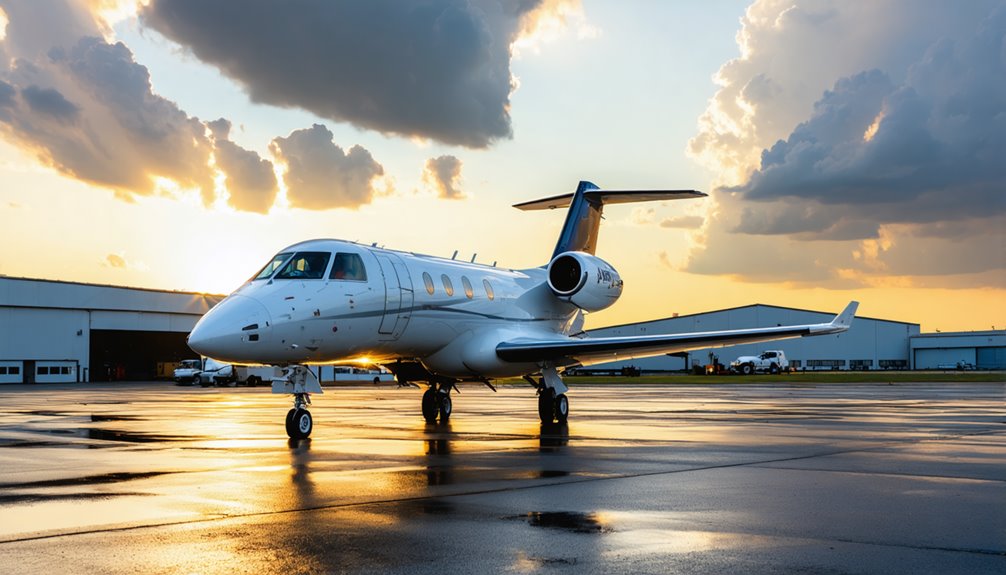
Light jets are a popular choice for many travelers, thanks to their unmatched airport access flexibility. Models like the Cessna Citation Bravo and Embraer Phenom 300 can land at thousands of regional airports. This opens up many travel options that larger aircraft can’t reach.
These nimble jets can operate on shorter runways, often as brief as 3,000 feet. This feature makes them ideal for both business and leisure trips. You can fly directly to destinations that commercial airlines may not serve. This often means landing much closer to where you want to go.
Another great aspect of light jets is their ability to fly nonstop for up to 2,500 miles without needing to refuel. This convenience is a significant advantage. You get to choose from a broader network of airports, allowing for a more personalized travel experience.
Whether you’re heading to a business meeting or a vacation spot, light jets offer the flexibility you need.
Weight Considerations and Impact on Flight Distance
When booking clients on light jet rentals, I focus on the important link between payload and range. Every pound of luggage or passenger weight affects how far you can fly. Your baggage allowance isn’t just for comfort; it’s a careful limit to ensure the aircraft performs well during the trip.
I will help you manage weight distribution in the cabin and cargo areas. This approach boosts safety and can significantly increase your flight distance if done correctly. Light jets are known for their speed and agility, but they also have strict weight limits.
Understanding these limits is crucial. For instance, the Cessna Citation M2 can carry up to 1,500 pounds. If you pack wisely, you can maximize both your comfort and your flight range.
Payload vs. Range Tradeoffs
When you think about light jets, it’s vital to grasp the trade-offs between payload and range. This understanding shapes your travel plans. Every pound you load onto a jet can affect how far you can fly. The connection between weight and distance is clear: more weight means less range.
For instance, if you add 100 pounds to your jet, you might lose about 1% of its maximum range. This is significant. Planning your flight involves careful consideration of the weights of passengers, luggage, and fuel.
A fully-loaded light jet designed for eight passengers could reduce its flying range from 3,000 miles to under 2,500 miles. This reduction isn’t trivial. Choices about how many passengers to bring, what luxuries to include, and how much fuel to carry will all influence how far you can go.
I can help you navigate these choices to find the right balance between comfort and distance for your trip. Understanding these factors can make a big difference in your travel experience.
Baggage Capacity Limits
When talking about light jets, three main factors shape their baggage capacity: space, weight limits, and how these affect flight range. I often tell clients that most light jets can carry between 45 and 80 cubic feet of luggage. The Beechjet 400 stands out for its generous storage options.
Think about your passenger count. It plays a big role in fuel efficiency and how much luggage you can bring. Every added pound reduces your maximum range. If you’re flying over 1,500 miles, you might need to stop for fuel. Finding the right balance is key if you want to fly far without interruptions.
Before takeoff, pilots must always check total weights. Going over limits can hurt safety and performance. When you’re flying at speeds of 450-500 mph, proper weight distribution is crucial. It helps your aircraft perform at its best.
Light jets, like the Citation CJ3 and Phenom 100, are great for short to medium flights. They’re designed for speed and efficiency. These jets provide comfort and flexibility for travelers, making them a popular choice for business trips and leisure travel alike.
Weight Distribution Essentials
When it comes to private jets, weight distribution is crucial. It’s not just about keeping your luggage within limits. For light jets, the balance of weight affects range and fuel efficiency. Even a few extra pounds can make a difference in how far you can fly.
Modern light jets use advanced aerodynamics and lightweight materials. These innovations help the aircraft move smoothly through the air. Proper placement of passengers and cargo can improve performance. In fact, it can extend your flying range by as much as 15%.
Regular weight checks are important. They ensure that the aircraft performs as it should. If the weight is balanced correctly, it allows for maximum fuel capacity. This means you can explore more distant destinations without needing to stop for fuel.
Baggage Capacity Specifications Across Light Jet Models
When choosing a light jet for your next trip, baggage capacity is a key factor. It can greatly affect your travel experience. Light jets typically carry 4 to 8 passengers and are designed for journeys up to 3,000 miles.
However, different models have unique features that can benefit you.
The Beechjet 400 stands out for its impressive internal baggage space. This makes it ideal for those who want to keep their bags within the cabin.
On the other hand, if you need more external storage, the Cessna Citation CJ2 offers the largest external baggage compartment in the light jet category.
Whether you plan to bring golf clubs, skis, or luggage for a long trip, knowing the storage options helps you pack wisely.
You can travel with all your essentials without sacrificing comfort or performance. Understanding these specifications will ensure your journey is smooth and enjoyable.
Fuel Efficiency Factors in Light Jet Performance
Fuel efficiency is a key element in assessing the performance and costs of light jet rentals. When choosing a light jet, I focus on its aerodynamic shape and engine features. These factors determine how far the jet can travel, typically between 1,500 to 3,000 miles.
Aerodynamics and engine design significantly impact a light jet’s range, making fuel efficiency crucial for cost-effective private aviation.
Your overall costs depend heavily on how much fuel the jet uses while cruising at speeds of 450 to 500 mph.
Light jets can land at smaller airports because of their efficient, lightweight build. This flexibility can save time when flying to less accessible locations.
Keeping the passenger count between five to six people enhances fuel efficiency, as jets operate best with optimal weight. Regular engine maintenance is vital. It ensures the engines run smoothly, which helps to minimize fuel waste during flights.
Finding the right balance between speed and distance allows for fewer stops for refueling. Understanding these factors is essential for getting the best value from your private aviation experience.
It also ensures that you enjoy the benefits of flying on your schedule without unnecessary delays.
Passenger Comfort vs. Range Trade-offs
When choosing a light jet for rental, consider the balance between passenger comfort and flight range. Light jets are great for regional trips. They can fly at speeds up to 500 mph and offer good amenities for passengers. However, if your journey exceeds 2,000 miles, you will probably need to refuel along the way.
Here’s a quick look at different jet types:
| Jet Type | Passenger Capacity | Max Range (miles) |
|---|---|---|
| Very Light | 4-5 | 1,500-1,800 |
| Light | 6-7 | 1,800-2,400 |
| Super Light | 7-8 | 2,400-3,000 |
| Midsize | 8-9 | 2,800-3,500 |
| Super Midsize | 9-10 | 3,500-4,000 |
For short trips, focus on comfort features. Look for cabin height and seating arrangement. For longer flights, be prepared to give up some capacity and luxury. This trade-off is a basic part of flying. The science of aviation shows that as range increases, certain comforts may decrease.
Weather Conditions and Their Effect on Light Jet Range
Weather conditions significantly affect the range of light jets. When you rent a light jet, it’s important to know how the weather can impact your travel time and fuel efficiency. Headwinds can cut your jet’s range, which means you might need to stop for fuel more often than expected. On the flip side, tailwinds can help extend your range, sometimes allowing you to skip those extra stops.
Seasonal wind patterns are a big factor. In winter, flights across the continental United States can use up to 20% more fuel. This is partly due to stronger headwinds. Storm systems can also change your route, adding extra miles and burning more fuel.
Temperature is another consideration. Extreme heat can lower engine efficiency, which can further reduce your overall range.
To get the most out of your light jet, it’s wise to plan your flights around the weather. By doing this, you can maximize your jet’s effective range and save on fuel costs.
Understanding these weather factors can make a real difference in your travel plans. It helps ensure a smoother and more efficient journey in your light jet.
Comparing Light Jet Range to Other Private Aircraft Categories
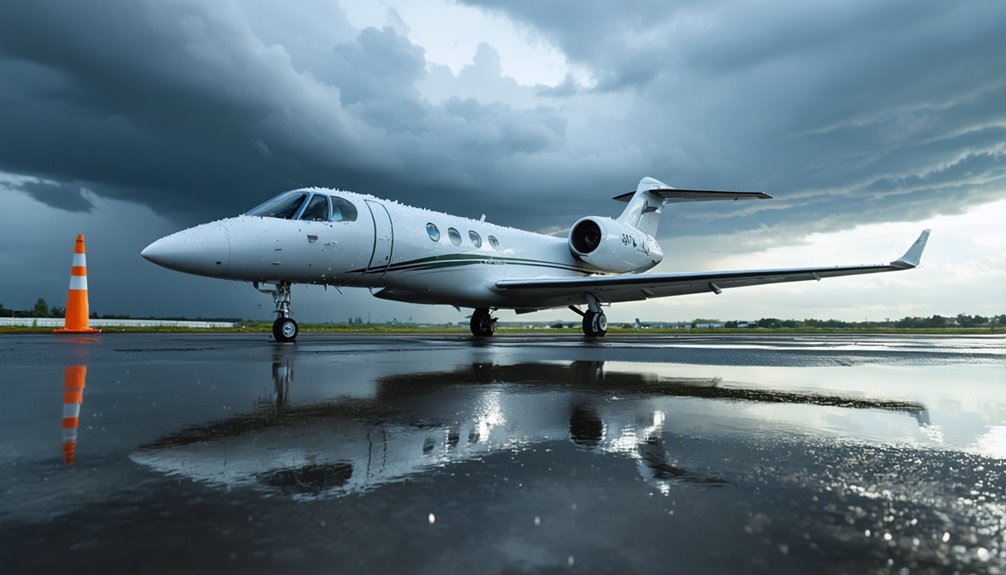
Light jets offer a unique advantage for regional travelers. Unlike heavy jets, which can fly over 4,000 miles, light jets find their sweet spot. They bridge the gap between Very Light Jets, which have a limited range of about 1,200 miles, and super midsize jets that can reach up to 3,400 miles. This makes light jets an attractive option for those who don’t need extreme distance but still want comfort and efficiency.
Fuel efficiency is another critical factor. Light jets outperform midsize jets when it comes to shorter flights. This means lower operational costs for travelers.
Additionally, light jets can access smaller airports, giving clients more flexibility. Larger aircraft often can’t land at these airports, limiting options for travelers. In this way, light jets provide both value and convenience for regional journeys.
Range Versus Size
Light jets are an interesting category in private aviation. They balance range and size well, making them a popular choice for many travelers. When selecting an aircraft, understanding how range connects with size is vital for your travel plans.
These jets can fly between 1,500 and 3,000 miles. They’re compact, making them ideal for regional trips. Light jets accommodate 4 to 8 passengers comfortably, and they’re more fuel-efficient than midsize jets.
With cruising speeds of 450 to 500 mph, light jets offer quick travel for shorter distances. Their lower operating costs make them a smart financial choice when you don’t require extensive range.
The size-to-range ratio of light jets lets you reach smaller airports, expanding your travel options while still covering significant distances.
Fuel Efficiency Differences
Considering a light jet rental? It’s important to know how these aircraft compare to others in terms of fuel efficiency.
Light jets stand out by using less fuel, costing around $9,000 to $10,000 per hour. This is significantly lower than larger jets, making them a smart choice for your wallet.
The design of light jets is truly impressive. They cruise at speeds between 450 and 500 mph, achieving a range of 1,500 to 3,000 miles without burning excessive fuel.
This makes light jets ideal for regional trips where you want both freedom and flexibility.
Access to smaller airports is a huge benefit. It reduces travel time on the ground, which is particularly useful for business trips or quick getaways.
Light jets strike a great balance between operating costs and range. You’re getting efficient private jet travel tailored to your needs, without the extra costs associated with long-haul flights.
Key Features of Top Light Jet Models in Today’s Market
When you look into light jets, knowing their standout features can help you choose the right one for your needs. The best light jets bring together impressive range, roomy seating, and modern technology.
The Cessna Citation Bravo is known for its regional flexibility. It seats seven passengers and has a range of 2,000 miles, making it ideal for cross-country business flights. This jet is popular for its reliability and performance.
Next up is the Embraer Phenom 300. It offers both speed and comfort. Its advanced avionics make navigation a breeze, which is a big plus for pilots and passengers alike. This jet is often praised for its cabin space and smooth ride.
Then there’s the Gulfstream G100. With a remarkable range of 3,100 miles, this jet allows travelers to reach many destinations without needing to refuel. It’s well-regarded for its efficiency and luxurious interior.
Most top light jets cruise at speeds between 400 and 450 mph. They can also land at smaller airports, which means you can get closer to your final destination. This convenience can save you time and make your journey more enjoyable.
Choosing the right light jet rental means weighing these features against your travel plans. Each jet offers unique benefits, so consider what matters most for your trip.
Strategic Planning for Maximizing Light Jet Travel Distance
Light jets are a popular choice for private travel, known for their speed and efficiency. To maximize your light jet’s range, there are three key strategies to consider.
First, it’s crucial to understand flight planning. This means figuring out the best altitudes, routes, and fuel needs based on how your jet performs. For example, flying at the optimal altitude can help you save fuel and reach your destination more efficiently.
Next, focus on fuel efficiency. Keeping your cruise speed steady, reducing excess weight, and choosing the right places to refuel can really extend how far you can go. Studies show that these steps can increase your range by 10-15%.
Lastly, always be ready to adapt to weather conditions. Sometimes, changing your departure time or route can help you dodge headwinds. These winds can significantly reduce your range, sometimes by as much as 25%.
Flight Planning Fundamentals
When you think about light jets, it’s important to know the different types and what makes them special. Light jets are popular for short to medium trips. They can carry a small group of passengers and have a good range for their size.
First, let’s consider the capacity. Light jets typically hold 4 to 8 passengers. This makes them perfect for business trips or family vacations. The more people and bags you add, the more it affects the jet’s range and fuel efficiency. So, always calculate your passenger load before you fly.
Weather can play a big role too. Light jets can experience reduced range if there are strong headwinds. Studies show that headwinds can decrease your effective range by about 10 to 15%. Checking the weather forecast is key to planning your route.
Choosing the right airports is another smart move. Smaller airports often bring you closer to your final destination. This helps you avoid long ground transfers, making your journey smoother and faster.
Also, modern navigation systems are a game changer. They provide real-time updates and allow pilots to adjust their course for better performance. This means you can get to your destination more efficiently.
With thoughtful planning, you can tap into the true benefits of light jets. They offer flexibility and speed, making your private flying experience enjoyable.
Fuel Efficiency Tactics
Light jets are a popular choice among private aviation enthusiasts. They typically have a range between 1,500 and 3,000 miles. Understanding how to maximize their fuel efficiency is essential for optimal performance.
To enhance your light jet’s capabilities, strategic flight planning is critical. This involves considering factors like altitude, speed, and route selection. Efficient use of these elements can help you travel longer distances without frequent fuel stops.
For example, flying at a higher altitude can reduce air resistance and improve fuel burn. Additionally, selecting a direct route minimizes travel time and fuel consumption. By carefully planning your flights, you can extend the range of your light jet and enjoy a smoother journey.
Weather Impact Mitigation
Light jets are a popular choice for private travel, but weather can affect their performance. To make the most of your light jet’s range, it’s important to plan ahead and use real-time weather information. This can help you fly farther and save fuel.
When you plan your flight, consider using advanced forecasting tools. They allow you to choose routes that avoid strong headwinds and take advantage of helpful tailwinds. This can significantly improve fuel efficiency.
Adjusting your altitude can also be beneficial. By flying at different heights, you can steer clear of turbulence, keeping your fuel reserves safe.
Before you take off, analyze the weather. This helps you find the best flight paths that reduce the risk of weather-related issues.
While you’re in the air, keep an eye on the weather. If conditions change unexpectedly, you can alter your route to stay safe and efficient.
Finally, it’s smart to plan for potential fuel stops based on weather forecasts. This keeps your options open and ensures you can adapt to changing situations.
Real-World Range Scenarios for Business Travelers
Light jets are a popular choice for business travelers looking for convenience and efficiency. These aircraft typically have a range of 1,500 to 2,500 miles. This range is ideal for regional flights, allowing travelers to avoid the hassle of multiple fuel stops.
Take the Cessna Citation Bravo, for instance. It can fly 2,000 miles, making it easy to travel from New York to Miami in under three hours. Another great option is the Embraer Phenom 300, which can connect Los Angeles to Seattle nonstop. This is perfect for those important meetings.
One significant advantage of light jets is their ability to land at smaller airports. Unlike commercial airlines, these jets can access locations that are often more convenient for business travelers.
The Gulfstream G100, for example, boasts a remarkable 3,100-mile range. This makes it possible to fly from New York to the Caribbean in one day, providing both freedom and efficiency.
Technical Innovations Extending Light Jet Capabilities
Light jets have become a popular choice in private aviation due to their impressive capabilities. Over the past decade, innovations have changed how these aircraft operate. Lightweight materials have played a crucial role in improving fuel efficiency. This means that light jets can fly longer distances than before.
Advanced aerodynamics are a game-changer. They can reduce drag by up to 30%. This allows light jets to move through the air smoothly and efficiently. State-of-the-art jet engines offer better performance. These engines use less fuel than older models, making flights more cost-effective.
Innovative aerodynamics slash drag by 30%, enabling light jets to glide through the skies with unmatched efficiency.
Navigation systems have also improved significantly. Enhanced systems can optimize flight routes in real-time. This helps pilots avoid headwinds, which can extend the range of the jet. Additionally, composite materials have made jets lighter. This reduction in weight doesn’t sacrifice strength, allowing for even longer flights.
With these advancements, light jets provide more flexibility. You can reach a wider range of destinations without needing to stop for fuel. This makes light jets an excellent choice for those seeking convenience and efficiency in private travel.
Cost-Benefit Analysis of Light Jet Rentals for Regional Travel
Light jets are an excellent choice for regional travel. Priced between $9,000 and $10,000 per hour, they provide remarkable value for trips under 1,500 miles. These jets are known for their impressive fuel efficiency, which helps keep operating costs lower than those of larger jets.
When you fill all 8 passenger seats, the savings become even more significant.
The real benefit of light jets is their ability to land at smaller airports that are closer to your destination. This feature cuts down on the time spent on ground transportation.
For travelers who value freedom and flexibility, light jets offer a blend of range, passenger capacity, and airport options. This makes regional travel easier and more efficient, providing both time savings and financial advantages that make the cost worthwhile.
Selecting the Optimal Light Jet Based on Your Itinerary
Choosing the right light jet for your journey is important. You need to think about where you’re going and how far it is. Light jets usually fly between 1,500 and 3,000 miles. This range helps make sure your destinations are reachable without having to stop for fuel too often.
When booking a charter flight, it’s crucial to match the number of passengers with the jet’s capacity. Most light jets can comfortably seat 4 to 8 people. This makes them a good choice for small groups traveling for business or leisure.
Light jets fly at cruising speeds of 400 to 450 mph. This speed is great for quick business trips that require visiting multiple cities in a short time. They can also use smaller airports. This means you can land closer to your final destination, saving you from long drives after your flight.
There are various models like the Citation Bravo and the Phenom 300. Each has unique features that can fit different travel needs. The flexibility of light jets is another advantage. You can change your departure times and destinations with little notice, making them very convenient.
Frequently Asked Questions
What Is the Range of a Very Light Jet?
Very light jets (VLJs) are a specific category of private jets known for their compact size and efficiency. They typically have a range between 1,000 and 1,500 miles. This range is essential when considering operating costs.
Fuel efficiency plays a crucial role in how far these jets can travel. With higher efficiency, you can maximize your distance without worrying too much about fuel expenses.
How Many Passengers Can a Light Jet Hold?
Light jets can usually seat between 4 to 8 passengers. The exact number depends on the specific model and its interior layout. These jets are known for their compact size and efficiency, making them popular for short to medium-distance flights.
When I help you find a light jet, I focus on how many people it can carry. I also consider space for luggage and overall comfort during the flight. These factors are important for a pleasant journey in the skies.
Light jets are often chosen for business trips or family vacations. They offer the freedom to travel on your schedule. With their nimble design, they can access smaller airports, getting you closer to your destination without the hassle of commercial flying.
How Far Can a Light Jet Fly?
Light jets typically have a range of 1,500 to 3,000 miles. These jets are designed for efficiency. They can fly at high altitudes without needing to stop for fuel. However, the exact range can depend on the specific model. Different jets have various performance levels and fuel efficiency ratings.
For instance, the Cessna Citation CJ3 and the Embraer Phenom 300 are popular models in the light jet category. Both offer great speed and comfort for travelers. They can easily connect cities that are far apart, making them ideal for business trips or vacations.
Flying in a light jet allows for a smooth and quick travel experience. You can avoid long waits at commercial airports. Plus, you can reach your destination faster. So, if you need to cover a lot of ground quickly, light jets are a smart choice.
What Is the Range of E Jets?
E-Jets are known for their impressive range, covering distances from 2,000 to 2,800 nautical miles. This range differs depending on the specific model. These jets are designed with advanced performance features and excellent fuel efficiency, which can help lower your travel costs. Plus, they provide a comfortable cabin experience.
When you think about light jets, E-Jets stand out. They strike a balance between performance and comfort, making them a popular choice for private travel. Their design focuses on maximizing passenger comfort while ensuring smooth flights.
Conclusion
Choosing the right light jet for your trip can really enhance your travel experience. For instance, I once flew a group of executives from Chicago to Aspen on a Phenom 300. This jet has a range of 1,971 nautical miles and a cruising speed of 573 miles per hour. It provided a perfect mix of speed and comfort, especially when landing in the mountainous terrain.
Understanding how range, capacity, and performance work together is key. Light jets, like the Phenom 300, are designed for shorter trips, making them ideal for regional travel. They can typically seat around 6 to 8 passengers, which is perfect for smaller groups.
When you know the specifications of different light jets, you can make informed decisions. This not only helps you stick to your budget but also ensures a smoother journey. Researching various models, like the Cessna Citation M2 or Embraer Phenom 100, can give you insights into their unique features and advantages.
By focusing on your specific travel needs, you can select a light jet that truly fits. This way, your travel will be both efficient and enjoyable.

